Mildew, with its musty odor and unsightly appearance, can be a persistent problem on fabric surfaces. Whether it’s your favorite clothes, upholstery, or curtains, the presence of mildew can be a real nuisance.
But fear not, as we’ve got you covered with a step-by-step guide on effectively removing mildew from fabric. Mildew, a type of mold, thrives in damp and humid conditions, making fabric an ideal breeding ground.
It not only stains and weakens the fabric but also poses health risks. In this comprehensive guide, we’ll explore how to remove mildew from fabric and restore your fabric to its pristine condition.
From natural remedies to store-bought solutions, we’ll discuss a range of options to suit your preferences and the severity of the mildew infestation.
With the right knowledge, you can bid farewell to mildew. Let’s dive in and reclaim your textiles from the clutches of mildew!
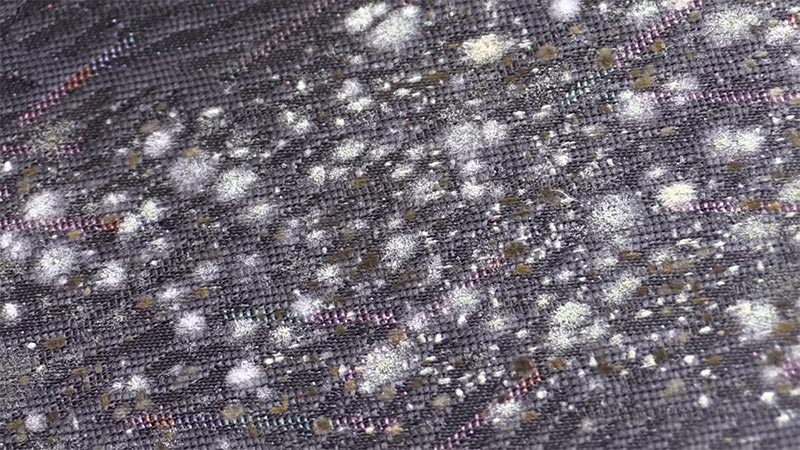
How to Remove Mildew from Fabric? 6 Steps
Removing mildew from fabric can be daunting, but with the right methods and patience, you can effectively eliminate this pesky problem. Here’s a comprehensive guide on how to remove mildew from fabric.
Before You Begin
Before starting the mildew removal process, it’s important to gather the following items: Choose a mild detergent suitable for the fabric you’re treating. Vinegar is an excellent natural mildew remover.
Baking soda can help with stain removal and deodorizing. Hydrogen peroxide is effective in killing mildew spores and removing stains.
Lemon juice has natural antibacterial properties and can help with stain removal. Salt can be used in combination with lemon juice for added cleaning power. A soft brush can be used to scrub the fabric gently.
You’ll need a container such as a bucket or sink to soak the fabric. Sunlight can be a powerful natural mildew killer, so find a sunny spot for drying.
Step 1: Safety Precautions
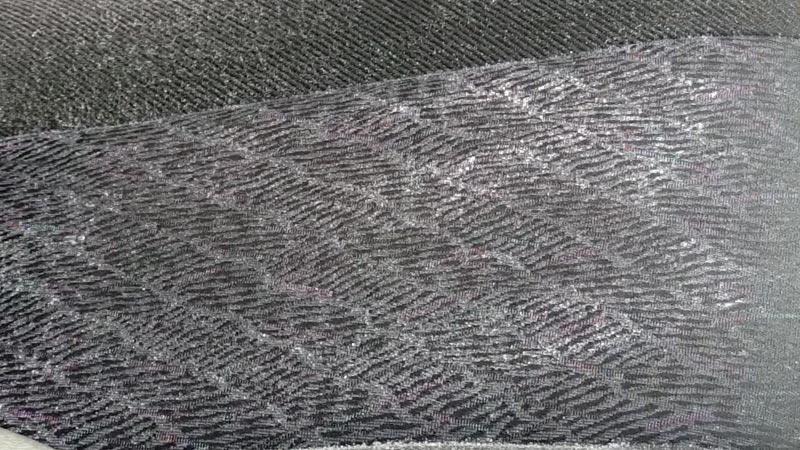
Before you begin, take some safety precautions. Work in a well-ventilated area to avoid inhaling fumes from cleaning agents. Wear gloves to protect your hands.
Check the care label on the fabric to ensure you’re using the right cleaning method and avoid any treatments that might damage the material.
Step 2: Isolate the Affected Fabric
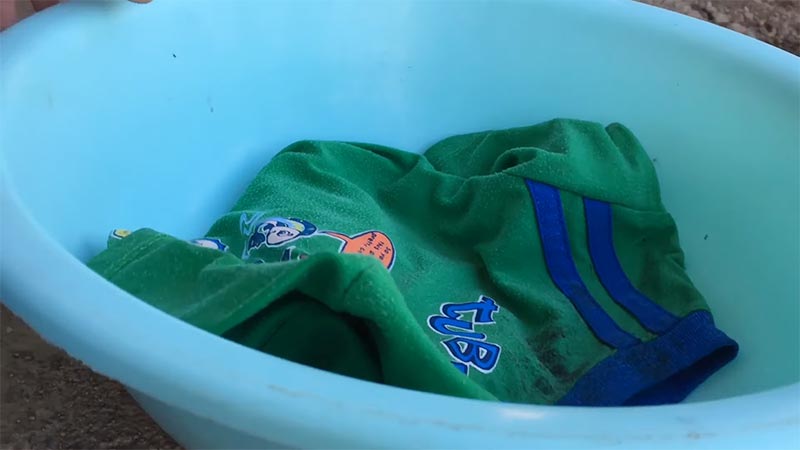
Remove the mildewed fabric from the affected area and isolate it to prevent the mildew from spreading to other items. Shake off any loose mildew spores outside to minimize contamination.
Using a soft bristle brush or a cloth, gently brush or wipe away any loose mildew from the fabric’s surface. Dispose of the mildew carefully to prevent it from spreading.
Step 3: Choose Your Cleaning Method
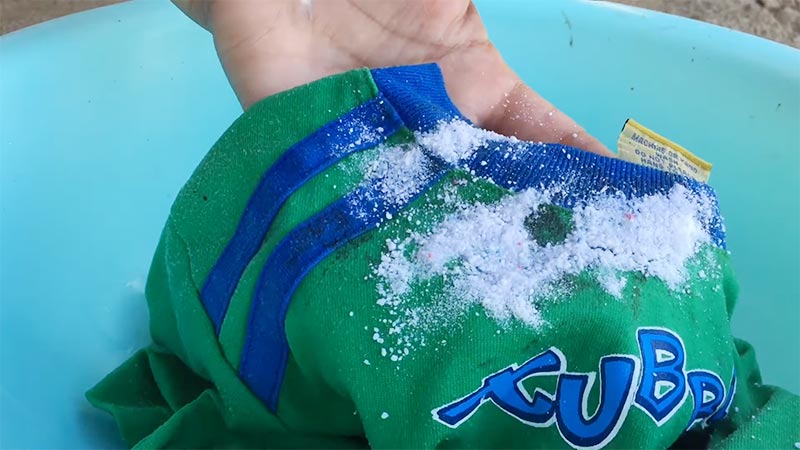
Now, let’s explore various methods to remove mildew from fabric:
Method 1: White Vinegar
White vinegar is a powerful natural mildew remover. Here’s how to use it: Mix equal parts of white vinegar and water in a bucket or sink.
Submerge the mildewed fabric in the solution and let it soak for at least 30 minutes to an hour. After soaking, gently scrub the affected area with a soft brush or cloth to remove the mildew.
Rinse the fabric thoroughly with clean water to remove any vinegar residue. Wash the fabric as usual with mild detergent and dry it in direct sunlight if possible.
Method 2: Baking Soda Paste
Baking soda is great for stain removal and deodorizing. Here’s how to make and use a baking soda paste: Mix baking soda with a small amount of water.
Apply the paste directly to the mildewed area and let it sit for 15-30 minutes. Gently scrub the fabric with a soft brush or cloth to work in the paste and remove the mildew.
Rinse the fabric thoroughly with clean water. Wash the fabric with mild detergent and dry it in direct sunlight.
Method 3: Hydrogen Peroxide
Hydrogen peroxide is effective at killing mildew spores and removing stains. Here’s how to use it: Dilute hydrogen peroxide with water. Use a 3% hydrogen peroxide solution (typically found in drugstores) and mix it with equal water.
Apply the diluted hydrogen peroxide to the mildewed area. Let it sit for 10-15 minutes or until the mildew stain begins to fade.
Rinse the fabric thoroughly with clean water. Wash the fabric as usual with mild detergent and dry it in direct sunlight if possible.
Method 4: Lemon Juice and Salt
Lemon juice, combined with salt, can be an effective natural mildew remover: Mix lemon juice and salt to create a paste. Apply the paste to the mildewed area and let it sit for 15-30 minutes.
Gently scrub the fabric with a soft brush or cloth to remove the mildew. Rinse the fabric thoroughly with clean water. Wash the fabric with mild detergent and dry it in direct sunlight if possible.
Step 4: Rinse and Wash
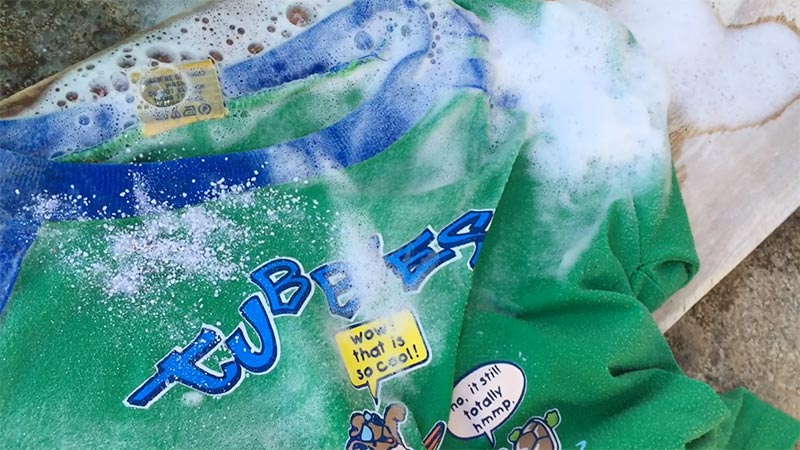
After using any of the above methods, be sure to rinse the fabric thoroughly with clean water to remove any residue from the cleaning agents. Then, wash the fabric as usual with mild detergent.
If possible, let the fabric dry in direct sunlight. Sunlight has natural mildew-killing properties and can help eliminate any remaining spores. Be sure to follow the care label instructions for drying the fabric.
Step 5: Check for Residual Stains
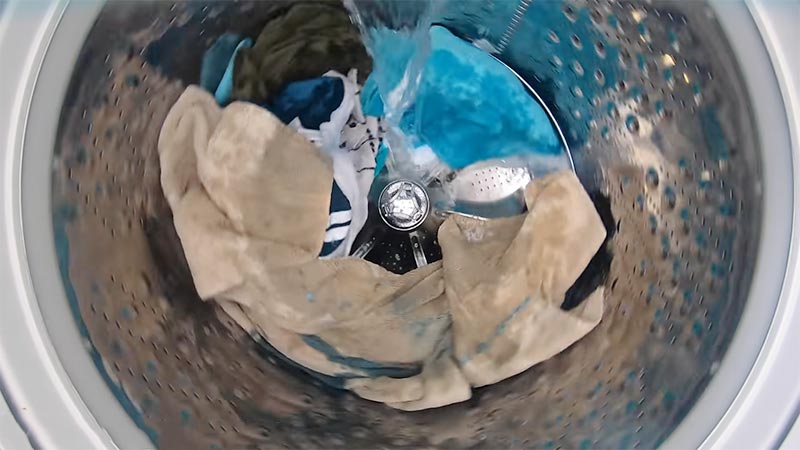
After drying, inspect the fabric for any residual mildew stains. If stains persist, repeat the cleaning process or try a different method. Prevention is key to avoiding future mildew problems. Store fabrics in a dry, well-ventilated area.
Keep humidity levels in check, especially in damp environments. Launder and dry fabrics promptly after use. Consider using mildew-resistant products or sprays on susceptible items.
By following these steps and choosing the best method that suits your fabric and situation, you can successfully remove mildew and enjoy fresh, clean textiles.
Always take care when handling cleaning agents and test any solutions on a small, inconspicuous area of the fabric before applying them more broadly.
How to Prevent Mildew Growth on Fabric?
Preventing mildew growth on fabric is crucial to maintaining the freshness and longevity of your textiles. Mildew, a type of mold, thrives in damp, humid conditions and can cause unsightly stains and odors.
Whether it’s your clothing, upholstery, curtains, or linens, here are effective steps you can take to prevent mildew from taking hold:
Keep Fabrics Dry
The most important step in preventing mildew is to keep your fabrics dry. Moisture is the primary factor that allows mildew to flourish. Here’s how:
After using fabric items like towels, swimsuits, or gym clothes, make sure to dry them promptly. Hanging them up to air dry or using a dryer can help eliminate moisture.
When storing seasonal items like winter coats or summer swimsuits, ensure they are completely dry before packing them away. Consider using moisture-absorbing products, like silica gel packets, in storage containers.
Maintain Proper Ventilation
Good ventilation is key to reducing humidity levels in your home. Here’s what you can do: Use exhaust fans in bathrooms and kitchens to reduce humidity after cooking or showering.
Keep windows open when weather permits to allow fresh air to circulate. Consider using a dehumidifier in areas prone to high humidity, such as basements or closets.
Store Fabrics in Clean Areas
Where you store your fabrics can impact their susceptibility to mildew: Avoid storing fabrics in damp areas, like basements or crawl spaces. Use clean and dry storage containers, and periodically check stored items for any signs of mildew.
Regular Cleaning
Regularly cleaning fabrics helps prevent the buildup of dirt and organic matter that mildew feeds on. Wash and launder fabrics according to their care instructions. Regular cleaning removes any potential food sources for mildew.
Use a mildew-resistant laundry detergent, especially for items that are more prone to mildew, like bath towels and kitchen linens.
Sunlight Exposure
Sunlight is a natural mildew killer. If possible, expose fabrics to sunlight: After washing, hang fabrics outside to dry in direct sunlight. The sun’s ultraviolet (UV) rays help to kill mildew spores. Periodically air out stored fabrics in the sun to prevent mildew growth.
Use Mildew-Resistant Products
Several products are available that can help prevent mildew growth: Mildew-resistant sprays or treatments can be applied to fabrics, especially if they are used in damp environments, like shower curtains or outdoor cushions.
Invest in mildew-resistant shower curtains for your bathroom to prevent mildew buildup in a moisture-rich environment.
Maintain Cleanliness
Regularly clean the areas where fabrics are used or stored: Vacuum upholstered furniture, curtains, and carpets to remove dust and debris that can attract moisture and promote mildew growth. Wipe down bathroom tiles, sinks, and counters to prevent moisture buildup.
Check for Leaks and Water Damage
Leaks and water damage can create the perfect conditions for mildew to thrive: Regularly inspect your home for leaks from pipes, roofs, or windows, and address any issues promptly.
If water damage occurs, dry affected areas thoroughly and consider using a dehumidifier to reduce humidity levels.
Following these preventive measures can significantly reduce the risk of mildew growth on your fabrics. Remember that prompt action and vigilance are key.
Regular cleaning, proper storage, and maintaining a dry environment go a long way in preserving the freshness and durability of your textiles. With these steps in place, you can enjoy your fabrics without worrying about mildew.
FAQs
How can I remove mildew stains from white fabric?
You can use a mixture of equal parts of white vinegar and water to remove mildew stains from white fabric. Apply the solution to the stained area, let it sit for 15-30 minutes, then gently scrub with a soft brush. Rinse thoroughly and launder as usual.
Can I use bleach to remove mildew from colored fabrics?
While bleach can be effective for removing mildew from white fabrics, it’s not recommended for colored fabrics as it may cause fading or damage. Instead, try using hydrogen peroxide, a color-safe mildew remover, or one of the natural methods mentioned earlier.
How can I prevent mildew from forming on outdoor cushions?
Preventing mildew on outdoor cushions involves regular maintenance. Store cushions indoors when not in use or cover them with waterproof covers.
Clean cushions regularly with a mildew-resistant detergent, and let them dry thoroughly in the sun after cleaning.
Can I prevent mildew in a humid climate?
Yes, you can prevent mildew in a humid climate by using dehumidifiers indoors to reduce humidity levels. Keep windows and doors closed during humid weather and use air conditioning. Use exhaust fans in bathrooms and kitchens to reduce moisture.
What should I do if mildew returns after cleaning my fabric?
If mildew returns after cleaning your fabric, it’s important to identify and address the source of moisture. Ensure the fabric is completely dry before storing it, and inspect your home for leaks or areas with high humidity.
Conclusion
In your battle against mildew on fabric, you’ve learned that prevention is key, but swift and effective action is crucial when mildew strikes.
Whether you opted for natural remedies like vinegar and sunlight or relied on commercial mildew removers, the results can be astonishing.
Always follow the care instructions on your fabric and test any cleaning solutions in an inconspicuous area first. Regular maintenance and drying of fabrics can significantly reduce the chances of mildew returning.
With the knowledge you’ve gained from this guide, you can tackle mildew issues head-on and restore your fabrics to their former glory.
Don’t let mildew dampen your spirits or your textiles; take charge and enjoy a fresher, cleaner environment. Here’s to a mildew-free future and the lasting beauty of your fabrics!
Leave a Reply